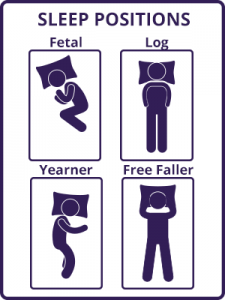 I find this topic of conversation comes up a lot, especially for those who live with pain. Sleep. Will I find a comfortable position? Will I fall asleep tonight? Will I be able to sleep in my bed or will I resort to the sofa or recliner? Will I stay asleep? Will I dream pleasantly? Will pain invade my peace or some other interloper breech my slumber?
I find this topic of conversation comes up a lot, especially for those who live with pain. Sleep. Will I find a comfortable position? Will I fall asleep tonight? Will I be able to sleep in my bed or will I resort to the sofa or recliner? Will I stay asleep? Will I dream pleasantly? Will pain invade my peace or some other interloper breech my slumber?
So, have you found your sleep genie or do you just dream of sleep? I know that I have experienced sleep challenges in the past which is disturbing as I have been known to be able to easily fall asleep, stay asleep and even if my sleep has been disrupted, I could get back into the groove quite easily. That was until I began to travel more across time zones, then menopause knocked on my door and more recently the challenge of raising new puppies in the household.
As I have grappled with this desire to get back my sleep, I naturally started to read more and talk more with others who have been dreaming of sleep longer than I. Here are some interesting tidbits to share.
 1) Did you know that how you sleep tells something about you and your point of view? Body language expert Robert Phipps has studied the four most common sleeping positions—fetal, log, yearner and free faller. He has determined how these positions reflect your personality and outlook on life. Which one are you?
1) Did you know that how you sleep tells something about you and your point of view? Body language expert Robert Phipps has studied the four most common sleeping positions—fetal, log, yearner and free faller. He has determined how these positions reflect your personality and outlook on life. Which one are you?
- Fetal – Curled up on one side with arms bent and knees tucked. People who sleep in the fetal position are returning to their comfort zone to de-stress after the day’s activities. The higher the knees and the lower the head, the more internal comfort you give yourself. Fetal sleepers are conscientious, orderly and like things in their place, but they can over-think and worry unnecessarily.
- Log – Fully extended head, neck, arms, legs and body all stretched out in a straight line. The longer you sleep like this, the more rigid your thinking and the harder it is to be flexible, which could mean that you’re making things harder for yourself.
- Yearner – Side sleeping position with both arms outstretched. This could mean one of two things…either you are chasing your dreams or you are being chased. You feel you want more from life and are willing to go out there and get it with both hands, ready to capture every new and exciting challenge that comes your way.
- Free Faller – Whole body outstretched, flat on your stomach with arms bent and hands gripping the pillow. Physically this is the least comfortable position for most adults, and free fallers tend to feel like life happens around them while they are just hanging on for the ride, which leads to a feeling that they are not in control.
2) Do you pay attention to your sleep habits (sleep hygiene)? These are different practices that are necessary to have normal, quality nighttime sleep and full daytime alertness. According to the National Sleep Foundation, it is critical to maintain a regular wake and sleep pattern, seven days a week. The urge us to spend an appropriate amount of time in bed, not too little, or too much—just enough to avoid daytime sleepiness. A minimum of seven to eight hours of sleep in bed is the average requirement for most adults.
Other tips to consider:
- Avoid daytime napping as it can disturb the normal pattern of sleep and wakefulness. Timing of your medications may affect this, especially if they are known to cause drowsiness.
- Avoid stimulants such as caffeine, nicotine, and alcohol too close to bedtime. Alcohol may help you fall asleep, yet it disrupts sleep and causes arousal in the second half as the body begins to metabolize the alcohol. It also causes dehydration. If you are taking opioid pain medications, it is not advisable to be drinking alcohol anyway as this could cause an unintentional overdose.
- Exercise can promote good sleep. A relaxing exercise, like yoga, tai chi or an evening stroll before bed can help you fall asleep and stay asleep. Vigorous exercise should be reserved for the morning or late afternoon. So, it is important that your physical therapy appointments or visits to the gym are not late in the day.
- Food can interfere if eaten right before sleep, so avoid large meals close to bedtime. Dietary choices can cause sleep problems too, like spicy dishes and the caffeine from chocolate. Travelers often deal with unpredictable meal times and time changes, so this can be particularly challenging. Keeping a “goody bag” of healthy food can make a critical difference.
- Maintain adequate exposure to natural light during the day as light exposure helps maintain a healthy sleep-wake cycle. This is challenging during winter months in northern regions and for those with medical conditions that interfere with mobility as well as advancing age. Scheduling time outdoors especially on nice days is an important to keep as a priority. Weathering pain with sunshine helps build your levels of Vitamin D too.
- Establish a regular relaxing bedtime routine. Try to avoid emotionally upsetting conversations and activities before trying to go to sleep. Most of all, do not bring your problems to bed.
- Preserve your bed for sleep. Try to avoid using your bed to watch TV, listen to the radio, or read—sit in a chair or use another room for these activities. See also, Sleep Issues and Pain.
3) Have you looked at what you are sleeping on? Nothing makes your body ache more than a low quality mattress and pillows. Support and proper body alignment is so important especially if you are living with pain. Investing in a quality mattress and supportive pillows can make a difference on whether your pain worsens or eases after a night’s rest. If you live with back pain, your mattress selection as well as sleep position is critical.
Did you know that if you have jaw pain from teeth grinding or TMJ that sleeping on your back will help your jaw relax at night? Using a towel or pillow roll under your neck and knees will help you sleep in a neutral position.
Know how to pick a mattress and be sure that you are present and can try out a new mattress before a new one is purchased. There are many to choose from and what works best for one person may not for another. The same goes for pillows. Personally, I am still in search of the ideal pillow—and I have bought or tried many. Good Housekeeping research on pillows may be useful to review before you decide to invest in new ones. WebMD has provided a guide on pillows if you have neck pain.
Sleep is sacred especially since it allows the body to heal and provides energy through the day to better cope with pain. Protect your sleep like you would your most valued treasure. It can make a difference in your life and your pain care. Share what works best for you with others who live with pain and grabble with finding their sleep genie. You may help unlock the secret to a new treasure—sleep as a dream come true.

Me I sleep on my Left side in a pretty tight fetal position. I roll over onto Right side and onto back frequently during the night due to pain that wakes me up. A good night is to fall asleep in one position and wake up 5-6 hours later in same position. that is when I say “thank you God for a good night!” I also deal with restless leg syndrome. Some night no problem, legs are relaxed and allow me to sleep. But other nights about 6 or more nights per month – I can not get them to cooperate…they are moving all night and I find that sleep is not going to happen so that is when I get some good movies out and just vicariously sail off into another life.
In the past year I have had a real problem with sleep cycle due to changes in pain characteristics and also pain intensity. there were weeks that I had but 2-3 hours sleep per night. But I now have a sleep medication and pain meds that help to make night time something to look forward to and not dread.
Turning down the lights early in the evening helps with my sleep hygiene. Doing a Gratitude journal before bed is also helpful. and a note pad near the bed helps when my mind starts racing…I sit up get the pad, write everything down that is pouring out of my brain…then I can settle down and sleep. it is on paper…sometimes I read it in the morning but mostly I ignore it.
My favorite pillow is a contour memory foam pillow. since getting hooked on that about 10 years ago I no longer wake up with neck aches. I could not afford a memory foam mattress so I bought a 3 inch memory foam topper and I love it. Like sleeping in a cloud.
Noki4, sleepless nights are the pits. Glad I do not have them too frequently.
And Naps are my favorite thing in all the world. do not get them often but there is nothing like laying down in the middle of the day and catching an hour nap!! My motto…”when all else fails, take a nap”
For me it is always the fetal position and I have to lay on my left side due to the pain in my back and neck. I don’t change positions in my sleep like some folks are able to do. I can fall to sleep easily but each night it is the same routine. Go to sleep, wake up within 2 hours. Go back to sleep (if it is a good night) and wake up within an hour or so. This goes on all night, sleep a little, wake up for a while, sleep a little, wake up. The really bad nights are the one’s I dread. Those are the nights where the pain does not allow me to sleep longer than a 1/2 hour or so and I lay there wide awake for hours at a time.